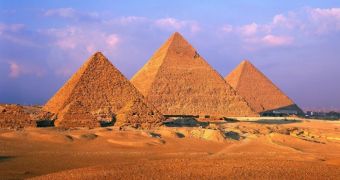Archaeologists exploring an ancient tomb located close to the Great Pyramid of Giza in Egypt claim to have stumbled upon a wall painting that was created thousands of years ago and that comprises images of boats, various animals, and even people.
The tomb inside which this wall painting was discovered quite a while ago, in 2012, is located at a distance of about 1,000 feet (300 meters) from the Great Pyramid, Live Science informs.
Researchers who have been excavating this archaeological site since 1996 explain that, according to evidence uncovered over the years, the tomb was intended to accommodate for the remains of a man by the name Perseneb.
Based on inscriptions found inside the tomb, specialists say that this Perseneb was an ancient priest. What's more, chances are that, while he was alive, he belonged to the social elite and did not experience any major financial struggles.
Hence the fact that his tomb was built to comprise an offering room, a central room, and a burial chamber, and also to accommodate for several statues showing Perseneb and other folks who were likely members of his family.
According to specialist Maksim Lebedev with the Russian State University for the Humanities, the painting discovered inside Perseneb's tomb dates back to about 4,300 years ago. Evidence indicates it was created on a thin layer of fine white plaster.
Of the original fine white plaster used to make this painting, just 30% is estimated to still be left on the wall. What's more, Maksim Lebedev and fellow researchers say that, over the years, much of the painting was damaged by soot and dirt.
Specialists who have had the chance to examine the painting's remains say that, when intact, the artwork showed boats sailing on the Nile River and heading south, people hunting birds in a marsh, and even Perseneb himself, together with his wife and dog.
It is believed that these images were included in the painting as a means to draw attention to the priest's social status, to document his life, and to hint at his rebirth following death and burial. It is unclear who exactly created this artwork at Perseneb's request.
Until now, a reconstruction of the wall painting has not been shared with the public. However, archaeologists hope that it will not be too long until a detailed account of their work, together with such a reconstruction, becomes available in the scholarly publication.
Archaeologists say that, although the city of Giza is worldwide famous for its pyramids, many tombs to whose existence most people are utterly oblivious can be found in the proximity of these massive structures. The tombs were built somewhere between 2649 – 2150 B.C. for high-rank individuals.

 14 DAY TRIAL //
14 DAY TRIAL //